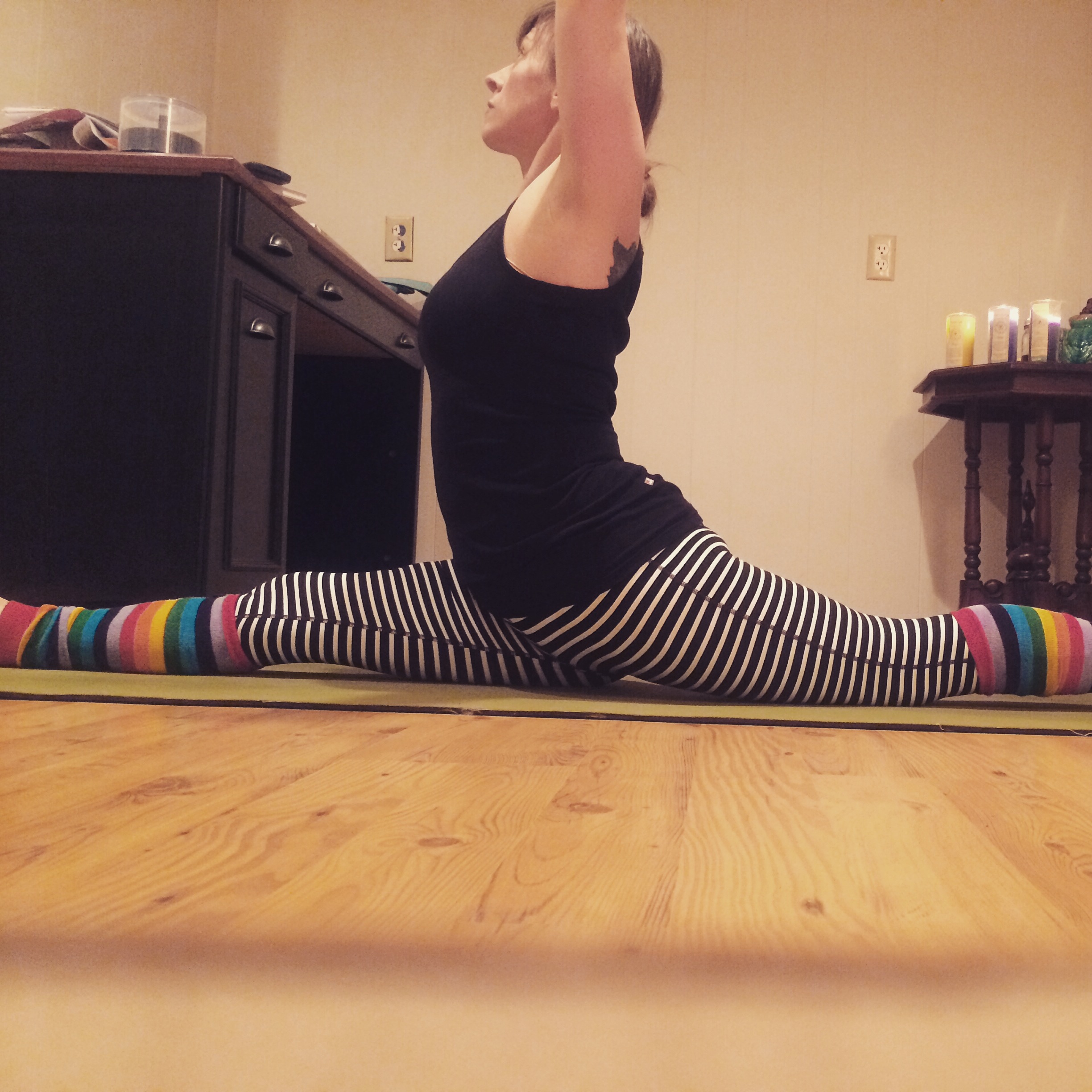So I have this new parlor trick! It’s come up a couple of times in the last week where I’ve mentioned having hypermobile Ehlers Danlos (hEds); when I say this, I hold my hands together as if in prayer, and then pop my elbows up and out so that only my fingers are still pressed together in prayer while bent at a 90-degree angle to my palms. Like this:
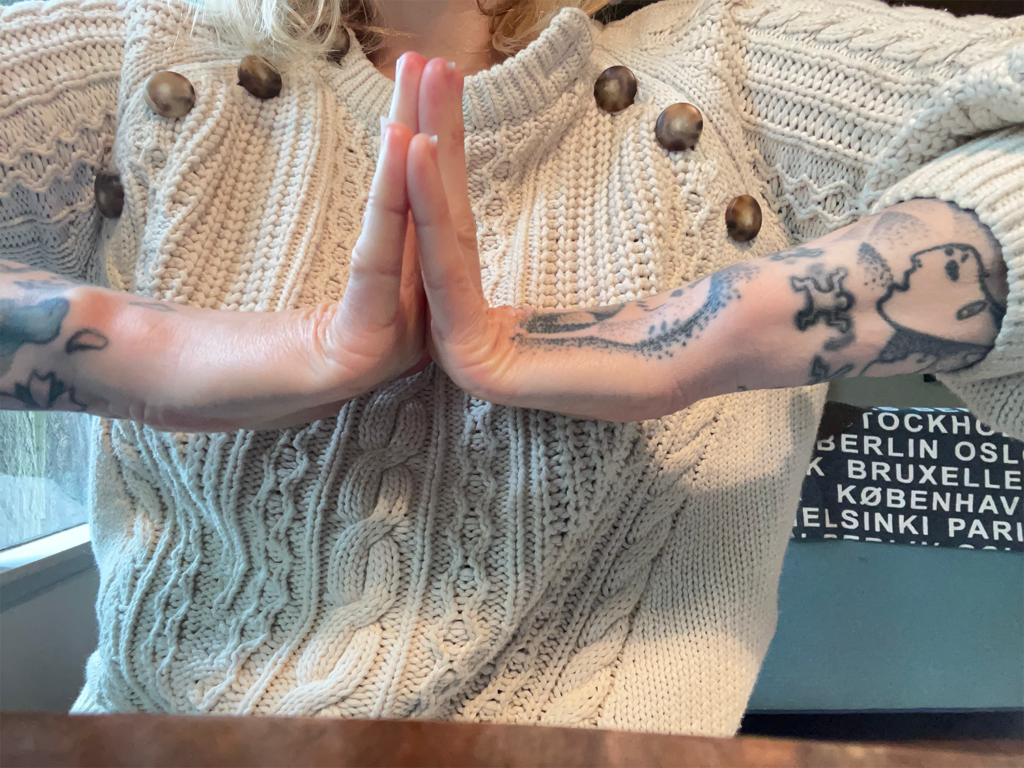
I never realized that this was a thing, that it was unusual to be able to bend my hand like this.
I can also do this (bend my pinkies past 90 degrees):
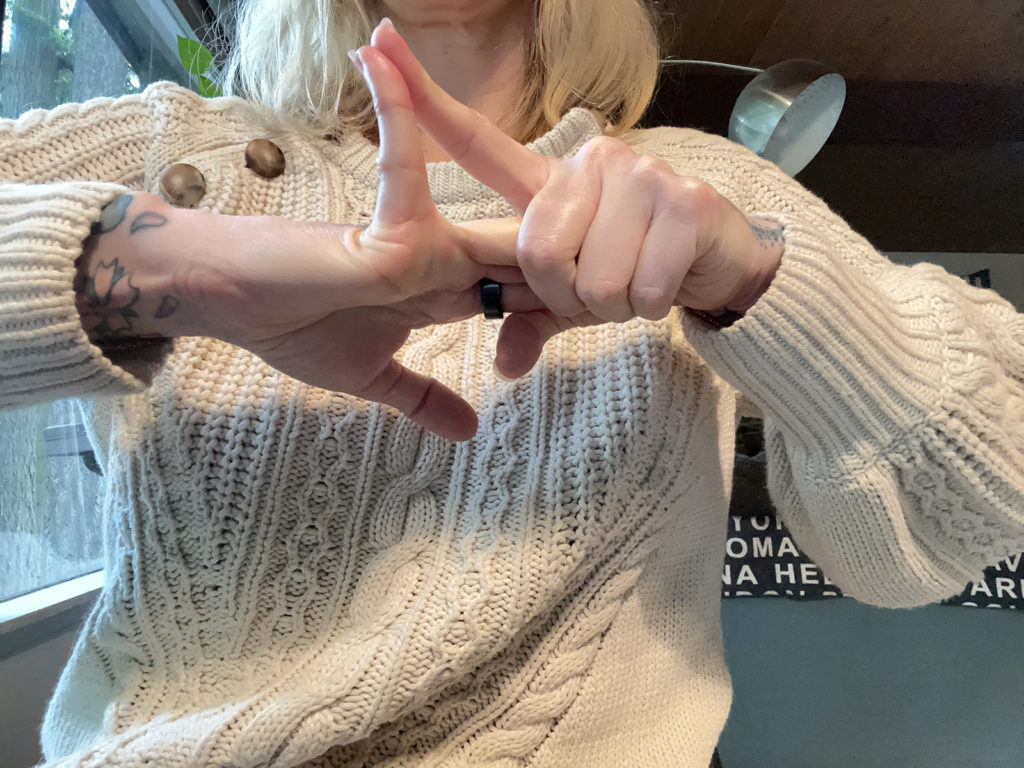
And both of my elbows hyperextend (especially my extra-freaky left one):
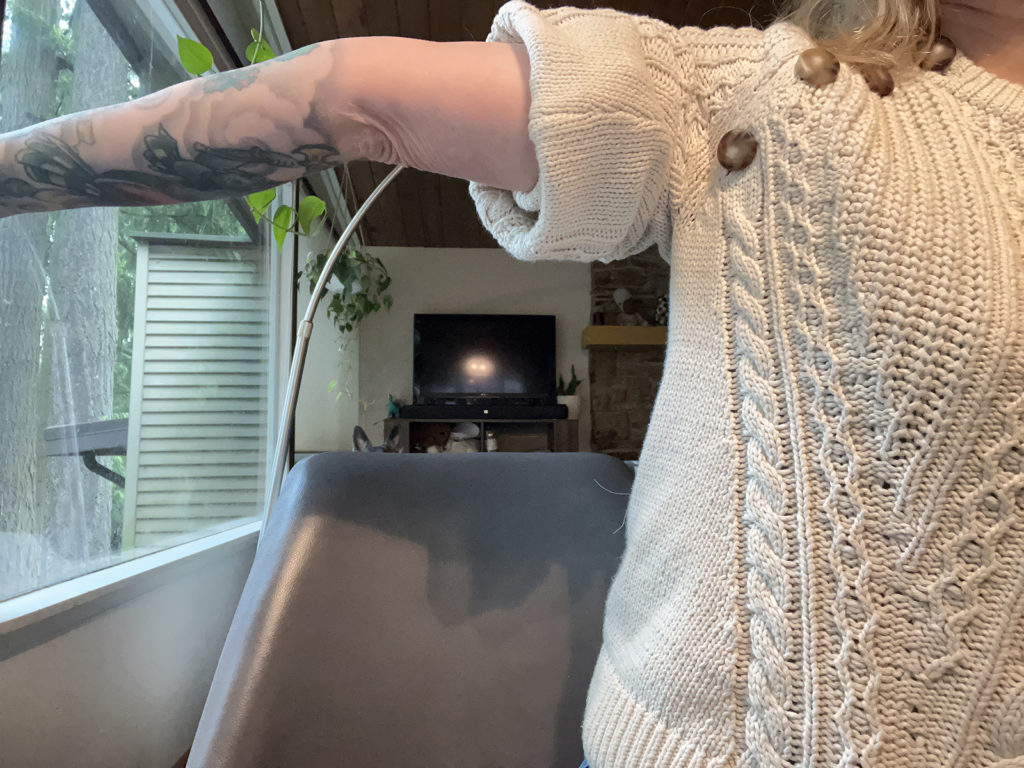
I can do what I just found out is called “bird sign”:
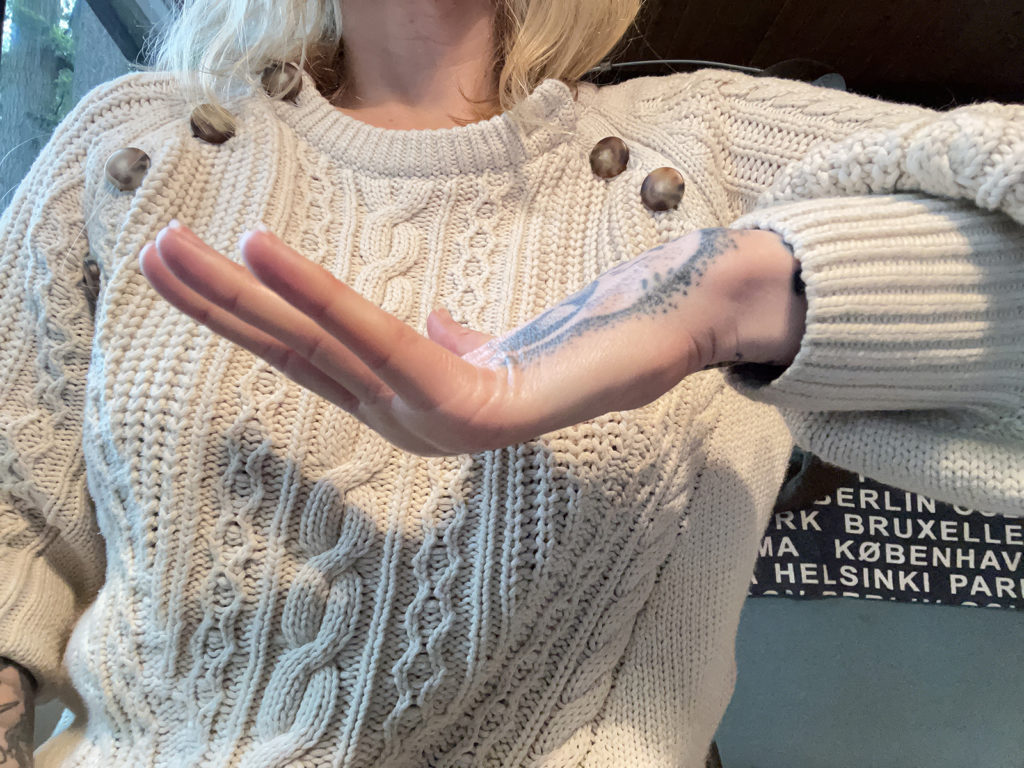
And I can easily bend over and put both palms flat on the floor without bending my knees, each knee hyperextends, and apparently not everyone can splay their toes out as wildly as I can. (You really don’t need a picture of my feet, do you? Or maybe you do—I painted my toenails a few days ago, a shade of green that I love but very much calls to mind “ectocooler.” IYKYK.)
Before I explain what this all means, I will also mention that from the day he met me and all the 15 years after, my husband regularly goes on about “how soft” my skin is. I always thought he was just being weird. I mean, what does skin normally feel like?? Though he’s not the first person to say this to me, either.
Well, it turns out these are all symptoms of Ehlers Danlos type III – hypermobile. Abbreviated hEds.
Ehlers Danlos is quite common among autistics. I know of it thanks to all the autistics I follow on social media who’ve talked about it. When we visited my mom in Pennsylvania a couple weeks ago, I was sitting on the couch when my son walked into the living room, bending his fingers against his face to crack them as he does five thousand times a day. He’s done this for years and years, but only this time did I look up and see what an extreme angle his fingers were bending. I asked him to bend his fingers back again for me, and when he did, I exclaimed, “Oh my god, you have Elhers-Danlos!” Of course I started reading more about it, which led me to the Beighton Scoring system for joint hypermobility & assessing Ehlers Danlos.
I score 7 out of 9. The only thing I can’t do is bend my thumbs back to my wrist.
Additionally, I found that periodontal disease and dental issues are extremely common, as Ehlers-Danlos III is a disorder of the connective tissue. Tooth pain got me back to the dentist a couple months ago, and since then I’ve been back to have a tooth removed, multiple deep cleanings, and future appointments to remove old, childhood fillings. As a kid, I had new cavities every single time I went to the dentist. My dentist told me, and my parents, that it wasn’t my fault and there was absolutely nothing I could do—the grooves in my premolars and molars were deeper than average, so no amount of brushing could get at anything accumulating there. (Had I been born a few years later, he said, I could have gotten them sealed. I see this being pushed on kids today, but it was brand new when I was around 12 or so.)
I’ve spent hours and hours researching and reading up on Ehlers Danlos; a full day alone was spent on “dental anomalies in hEds,” during which time I discovered that those extra deep grooves are often seen with hEds. And when I mentioned to my dentist that I was now certain I have this, she first said she was sorry to hear that (as it’s highly likely I’ll need to have more teeth removed as I get older), and then confirmed that it made sense given the level of periodontal disease I was now dealing with. My oral hygiene is not bad, not by a long shot. However, the degradation of connective tissue supporting my teeth leaves spaces under my gum for plaque and what-have-you to collect. I will be battling this forever, and I need to be supremely diligent about things like flossing, using anti-bacterial toothpaste & mouthwash, etc. It’s likely I should get cleanings more frequently than average, also.
Unfortunately, my son also has hEds, and he is far, far bendier (I’ve said his hands are like rubber) than I am. So upon the advice of my dentist, they’ll be assessing the measurement of his gums and connective tissue (it’s possible he’s already having degradation), and upping his oral hygiene game. Water piks, ahoy!
This also led me down the path to two other conditions that are frequently seen with hEds: POTS (postural orthostatic tachycardia syndrome) and Dysautonomia. These two conditions + hEds neatly tie up and explain every seemingly random & weird health/physical thing I’ve experienced over the years that had me racing to read tons and tons of symptom checklists and articles on various conditions. My inability to regulate my body temperature (always running hot), the frequent lightheadedness and dizziness, waking up with numb fingers, the two broken bones that had my mom worrying that I had brittle bones. My son also broke his leg when he was 6, from just jumping around in the grass at school. How easily he broke his tibia is explained by hEds.
And oh! People think I’m being dramatic, but I assure you I’m not: when I was younger (like all throughout my twenties or so), I would wake up in the morning with my shoulder dislocated. (Yes, I know how that sounds and YES, it was DISLOCATED.) It was among the worst pain I’ve ever felt. I remember just laying there, terrified of moving because the slightest bit of movement would cause fresh waves of agony. But then I’d suddenly hear a loud POP which brought immediate relief. In the last few days, I’ve read multiple accounts of people with hEds dislocating shoulders by doing things as simple as putting their coat on.
I had originally thought I couldn’t have hEds because I’m “not that flexible.” But one, I actually AM that flexible when I do yoga consistently (I could put my legs behind my head, do full hanumanasana splits, and all sorts of pretzel-like things). And two, I realized it’s about joint mobility, not flexibility. Hypermobility means my joints allow for greater range of motion (think of a door on hinges: tight hinges might only allow you to open the door halfway. Loose hinges would allow you to swing the door wide open.). Flexibility is about muscles—you can work on your muscles to lengthen them. I can go back to doing regular yoga to lengthen my muscles again. And at the ripe old age of 46, would be able to put my legs behind my head again. !!!
I plan on writing a lot more about this—a LOT more. The POTS and dysautonomia connections are huge. But I have a tendency to write nothing and then a novel, so I’ll stop here with this introduction. If you suspect you have hEds or are interested in learning more, stay tuned.

